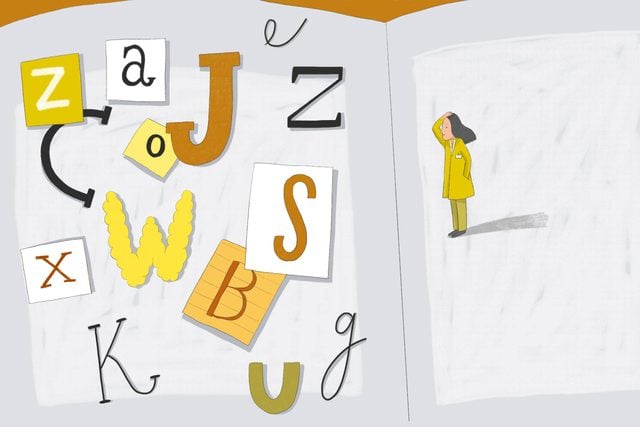Here’s the Surprising History Behind Why the Alphabet Is in the Order That It’s In
Updated: Apr. 04, 2024
And where did the catchy song come from?

As English speakers, it’s pretty much a guarantee that we have the alphabet ingrained in our memory, in order, from a very young age. You can probably say the ABCs at rapid speed without even thinking about it, and some people can even say them backwards. We certainly can’t imagine the alphabet being in any other order… but why is it in that order in the first place?
When you think about it, it doesn’t really make sense. It’s not arranged by vowels and consonants, similar sounds, or how often the letters are used. (That actually varies by language; on French keyboards, the letter “Q” is where our “A”s are. Here’s the full explanation for the location of our letters on the keyboard.)
So how did the order we know today come to be? There’s really not an easy answer. No one woke up and decided to put the letters in that order; the alphabet evolved slowly over a long period of time to become what it is today. In fact, here are the six letters you never knew that our alphabet lost along the way. Our alphabet can be traced all the way back to ancient Egypt, where foreign workers developed alphabetic lettering while the Egyptians themselves were still using hieroglyphics. This first alphabet was adapted by the Phoenicians, whose Mediterranean civilization thrived from 1500 to 300 BC. The Greeks then began using it around the 8th century BC, and we have them to thank for vowels. (And birthday cake, but that’s a whole ‘nother story.)
From Greece, our alphabet traveled to Rome, and it’s the Romans who turned it into the “modern” alphabet, with letters we recognize today. The University of Maryland made a seriously cool animation that visualizes the alphabet’s evolution. As you can see, while the individual letters changed quite a bit, the order as a whole has stayed pretty much the same, with only a couple exceptions. The Romans took “Z,” which was near the beginning of the Greek alphabet as “zeta” but had since disappeared, and tacked it onto the end of their alphabet. They also did something similar with “Y.” (Neither of those, however, was actually the last letter added to the alphabet—this letter was.)
So why that specific order? Well, we actually don’t know for sure. Some scholars theorize that it was based off of the order of Egyptian hieroglyphics. One of the most popular theories suggests that there was a numerical component; each letter had a number equivalent, and those have just been lost over time. Others have theorized that the order came from a mnemonic device meant to help people remember it—some kind of sentence where each letter became a full word, like the technique you used in school to remember the order of the planets. Can you imagine what a 26-odd-letter mnemonic device would be like, though? (We can!) Personally, we much prefer the song!
And I know what you’re thinking; no, the letters weren’t put into that order to fit the song. The tune already existed, in the form of “Twinkle Twinkle Little Star,” “Baa Baa Black Sheep,” and a French folk song widely considered to be the earliest version. In fact, considering that the alphabet order and the song tune already existed, it’s pretty impressive that they matched up so well! Next, learn the science behind why some songs get stuck in your head.
[Source: mentalfloss.com]
